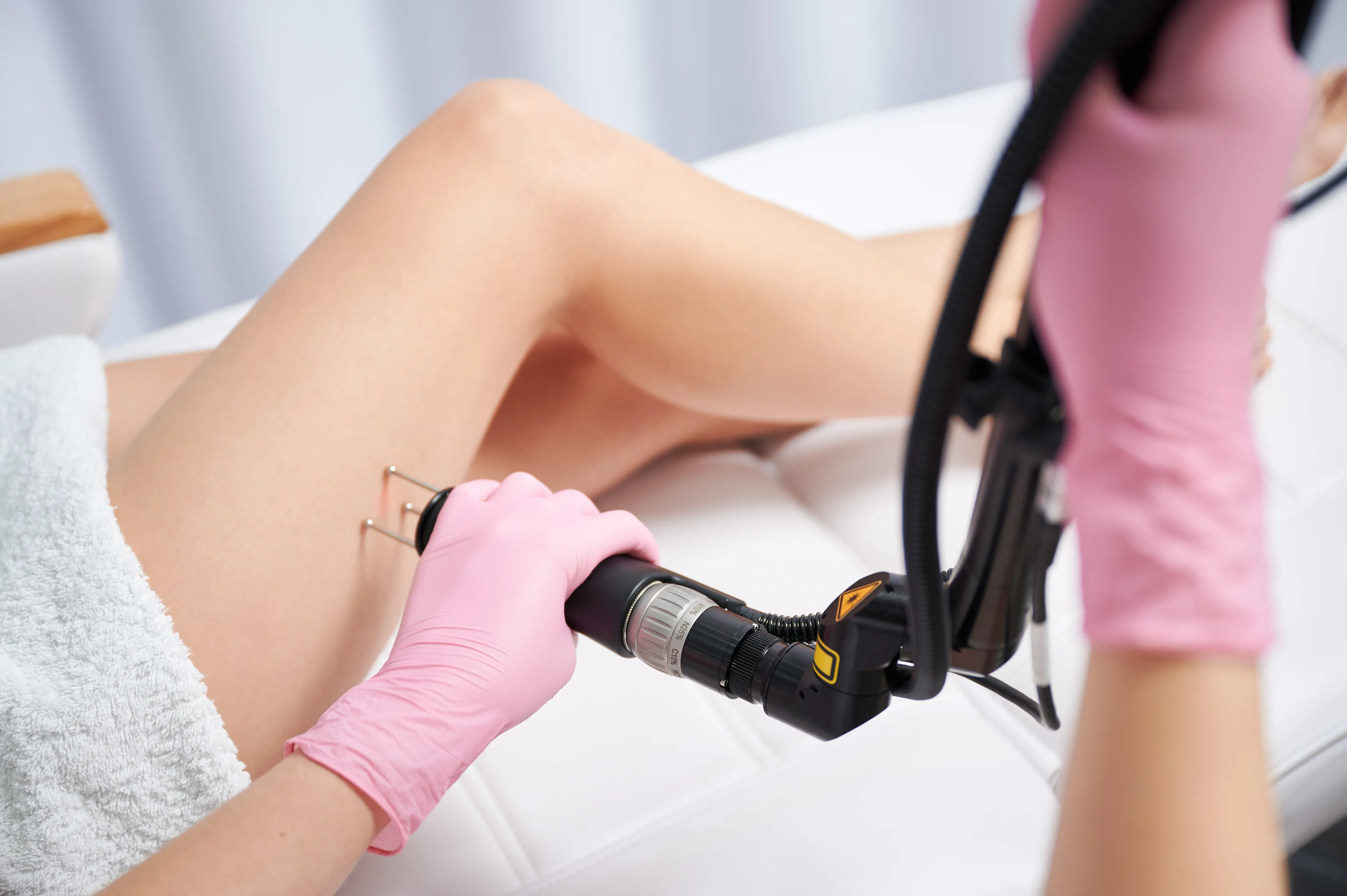Apart from using high-quality skincare products, achieving your complexion goals may involve in-office procedures like fractional laser resurfacing.
Fractional laser resurfacing can effectively address wrinkles, fine lines and sun damage on the skin. Furthermore, this form of laser can improve skin texture and pigmentation issues.
What is a Fractional Laser?
Fractional laser skin rejuvenation treatment utilizes cutting-edge technology to address fine lines and wrinkles, sun damage and uneven pigmentation on the skin. A fractional laser delivers multiple narrow columns of light to specific parts of the skin while leaving other parts undamaged, thus minimizing trauma while providing more efficient healing and results. Krauss Dermatology offers both ablative and non-ablative fractional laser solutions such as the Fraxel Dual Laser and Clear and Brilliant Laser for effective fractional laser rejuvenation solutions.
It can soften scars from accidents or surgical procedures while simultaneously decreasing pore size and wrinkles. Furthermore, it may reduce sun damage as well as redness caused by rosacea.
Fractional laser treatment can benefit most people. Chang noted that most patients can undergo fractional laser treatment successfully, and expect only mild discomfort or heat during treatment, depending on which laser type was selected (ablative lasers can typically cause greater discomfort due to wounding of skin tissue).
Before receiving treatment, patients must remove all products that contain retinoids and active acne medications from the treatment area, including lightening creams to help avoid post-treatment hyperpigmentation. After fractional laser treatments, it’s crucial that skin remains clean; Cohen recommends washing face with gentle non-abrasive cleanser several times daily before spraying an antimicrobial like hypochlorous acid spray (Lumarcyn). For best results during recovery from fractional laser procedures.
How Does a Fractional Laser Work?
Fractional lasers divide their laser beams into thousands of microthermal zones that penetrate deep into your skin, stimulating its natural healing processes to generate healthy new tissue growth that replaces sun-damaged and aged cells and leaves you with healthier and more beautiful skin with no recovery time required.
Although laser treatments may cause short-lived side effects, such as pain, redness, flaking or peeling and hyperpigmentation – most patients report being very satisfied with their results and experience more youthful, refreshed skin with quick recovery times.
Fractional laser resurfacing is often utilized for three main purposes. Some individuals seek to correct superficial facial lines and wrinkles; others wish to address pigmentation concerns or overall skin rejuvenation; while yet others wish to decrease large pores and acne scarring – something a facelift cannot accomplish.
Most patients require several laser treatments over one to four weeks in order to attain desired results. A topical anesthetic cream should be applied prior to beginning, and treatment itself typically lasts 15-20 minutes; recovery process depends on intensity and depth of laser treatments performed.
What Are the Benefits of a Fractional Laser?
Fractional laser treatments offer non-invasive solutions for numerous complexion concerns, from wrinkles and fine lines to uneven pigmentation and large pores.
Fractional laser treatments use light energy that is divided up into thousands of narrow, deep columns in the skin called microthermal treatment zones (MTZs). Unlike full-thickness injuries caused by other laser treatments, these microthermal treatment zones allow healthy tissue around each column to remain undamaged; thus speeding healing while decreasing side effects like redness, scarring and discoloration.
As soon as laser light reaches your dermis, it initiates your body’s natural healing processes and promotes production of new collagen, which then remodels old, damaged skin cells revealing healthier, tightened, smooth tissue beneath. Although results of treatment should last long-term, you’re more likely to reap those same rewards by maintaining good skincare practices after treatment!
CO2 fractional lasers offer noninvasive solutions to fine lines and wrinkles, including improving enlarged pores, sagging skin, acne scars and acne scarring by stimulating new collagen production.
Who is a Good Candidate for a Fractional Laser?
Laser skin resurfacing can be an effective solution for anyone struggling with fine lines and wrinkles, sun damage, leathery texture, blotchy pigmentation, crow’s feet or other flaws on their skin. Laser light sweeps away dead cells to allow your natural healing processes to rejuvenate from within and produce outstanding results.
Laser’s semi-ablative beam also stimulates collagen production, tightening skin and improving tone and texture. Over time, old scars will fade as new skin grows in, giving your complexion an appearance of new life as though you were born again on Sunday morning.
Fractional laser resurfacing is generally safe for all skin types and tones; however, those suffering from immune system disorders or connective tissue conditions should avoid laser resurfacing due to increased risks for complications and slow recovery times.
Before undertaking laser resurfacing, your practitioner will thoroughly discuss your medical history and current health to ensure this treatment is appropriate for you. They’ll also go over expectations so you know what to expect during and post treatment. If this type of laser treatment intrigues you, reach out now for a consultation and discover a brand new you! You won’t regret it!
Disclaimer: The content on this blog is intended for general informational purposes only. It is not a substitute for professional medical advice, diagnosis, or treatment. Always consult qualified healthcare providers for personalized advice. Information regarding plastic surgery, dental treatment, hair transplant, and other medical procedures is educational and not a guarantee of results. We do not assume liability for actions taken based on blog content. Medical knowledge evolves; verify information and consult professionals. External links do not imply endorsement. By using this blog, you agree to these terms.










